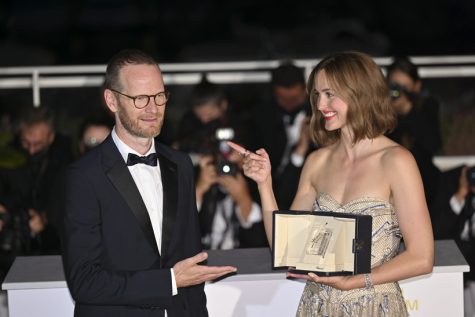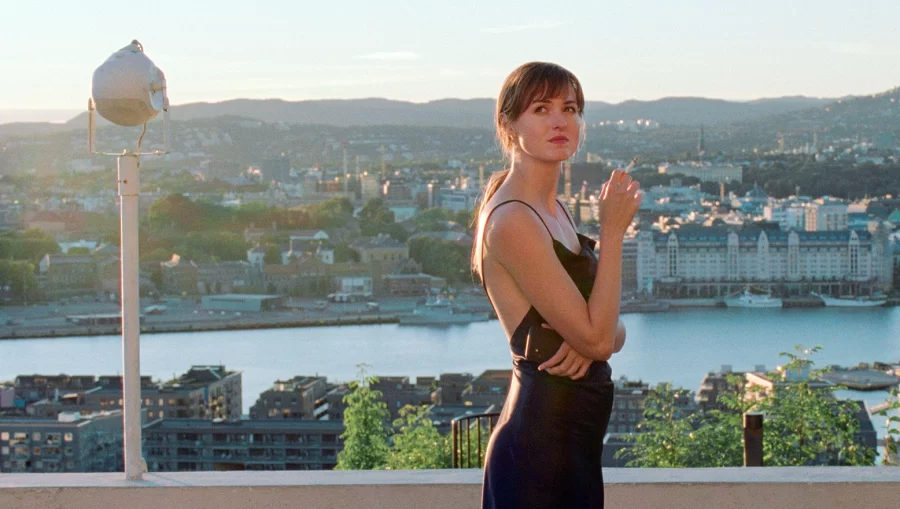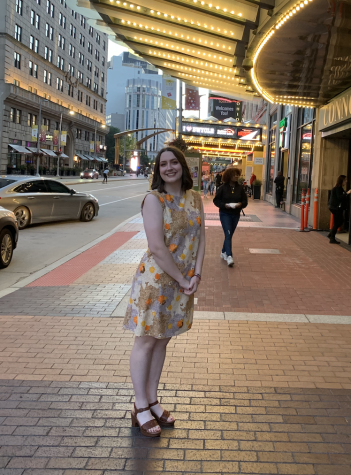“The Worst Person in the World” review: new and universal
Claire Schuppel covers and reviews “The Worst Person in the World.”
Feb 23, 2022
Film is not always meant to send you to larger-than-life realities, with high intensity action sequences or distant galaxies. Seeing humanity in movies is a valuable experience, and that is exactly what Joachim Trier’s 2021 film “The Worst Person in the World” provides.
The film follows Julie (portrayed by Renate Reinsve), a young woman on the verge of turning 30. The audience sees her through important relationships, different career aspirations, struggles with family life and identity confusion. It doesn’t sound like a unique story, but that is what the movie strives for: the universality of the young adult experience is a rite of passage that we all experience.
“The Worst Person in the World” has received critical acclaim, not only in the form of two Academy Award nominations but with

other prestigious awards, such as a Cannes Palme d’Or nomination. The film was also nominated for BAFTA awards and a myriad of other accolades. Names like Jamie Lee Curtis and President Barack Obama have praised the film.
The story is structured in 12 chapters, with a prologue and an epilogue. Hearing this at the beginning of the runtime is intimidating, but it offers a lot of creative freedom in regard to highlighting what parts of Julie’s story were most important to hear. We learn about her relationships with Aksel (played by Anders Danielsen Lie), an older comic book artist, and Eivind (played by Herbert Nordrum), who she meets during her relationship with Aksel. Again, the chapter formatting of the story helps to distinguish these relationships as separate moments of Julie’s young adulthood, while also showing the overlap of how they simultaneously affected her life.
The content of the story, aside from structure, is important for a lot of the twenty-somethings of the world to hear. Again, there is nothing spectacular about Julie or the people in her life, but that is a major appeal of the movie. Her plainness is what makes it easy for us to root for her; she is a human who tells lies, falls in love, is indecisive picking a career path and doesn’t know everything about herself or the world. The story does slow down with the end of the film, but it is still a rewarding viewing experience for the story alone.
The acting performances in the film are perfectly realistic. Most notably, Renate Reinsve as Julie is a strong demonstration of acting in an orthodox, human way. Subtlety and realism in acting can be difficult for the average actor to emulate, but Reinsve delivers. She won the best actress award at Cannes in 2021, which is a well deserved win. The supporting roles filled by Anders Danielsen Lie (who is also a medical doctor) and Herbert Nordrum were also impressive in their roles, as they both complemented Reinsve’s acting well.
From a technical standpoint, the movie has plenty going for it. The visuals are stunning, with experimental camerawork techniques and a realistic color palette as support. The camerawork does not draw attention away from the story, it only enhances it and makes viewers feel integral to the progression of the plot. There are also unexpected elements utilizing animation and special effects, but they are so well integrated into the story that they supplement the narrative. A chapter contains “Fear and Loathing in Las Vegas”-esque drug visuals, which break up the structure with purpose.
The soundtrack for the movie mixes a lot of different eras of music to bring together an overarching theme, similar to a coming of age tale. Having names that span decades, from Billie Holiday to Todd Rundgren and beyond, again emphasizes how all of us will experience feelings of youth and love in our twenties. The music matches every scene with perfection, supplementing the action but never taking attention away. It is eclectic and well suited for the story, worthy of a listen on its own.
There is so much to appreciate about “The Worst Person in the World,” which makes it an easy movie to recommend. It is not too heavy in the majority of its subject matter, its simple visuals and narrative devices are beautiful, the acting is extraordinary and a lot of young adults could resonate with the story. The pacing does abruptly slow down at the end and there are miniscule details (that would spoil the plot) that detract from the initial appeal, but it is still a strong entry in the Academy nominees.
The coming of age story will never get old, especially when they escape the usual confines of the adolescent experience. Thankfully, we have refreshing movies like “The Worst Person in the World” that provide us with new perspectives on the situations we go through at some point in the emergence of adulthood. Run like Julie in the film’s trailer to your nearest theater before this story leaves theaters.
Claire Schuppel is a sophomore from Lakewood, Ohio. She is the Arts and Life Editor for the Carroll News. You can reach her at cschuppel24@jcu.edu.













